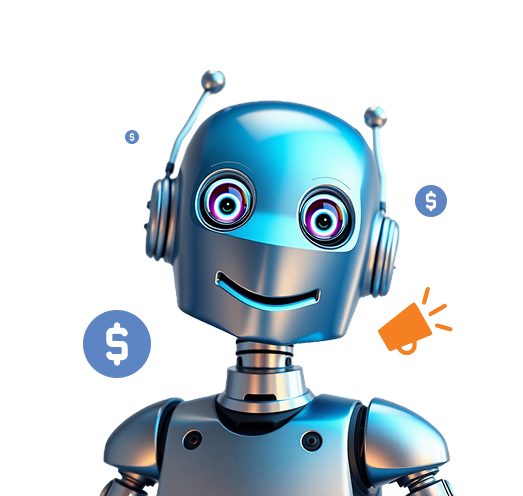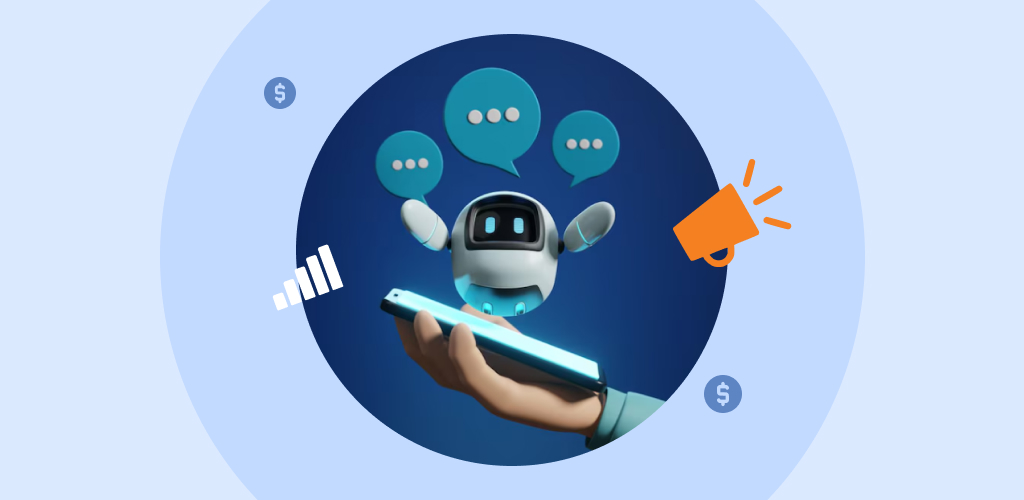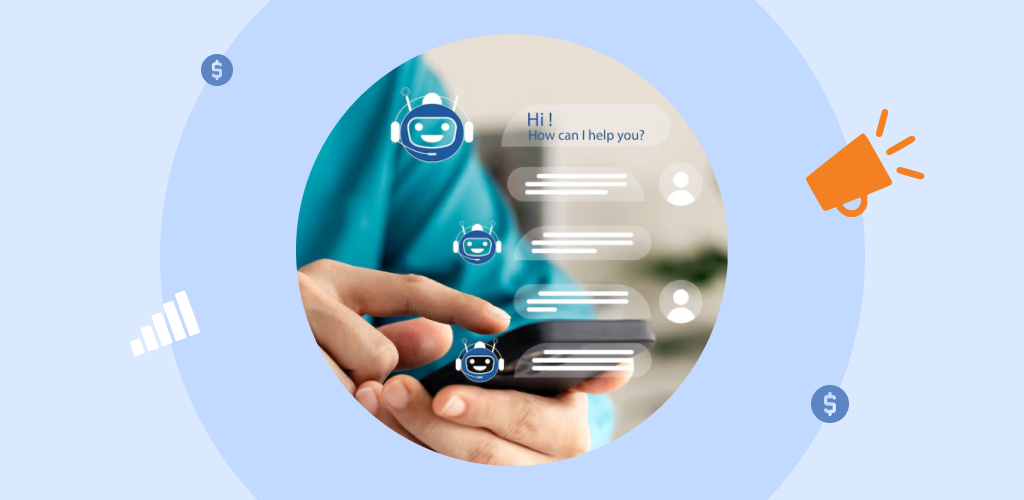A Successful Marketing Plan for Your Company Using AI Chatbot
27/04/2025

Start for free
It’s no surprise that there is increasing demand for innovative digital solutions to support purchasing decisions, especially considering the rapidly changing customer behavior in Saudi Arabia and the fact that over 92% of the population owns smartphones, one of the most important of these solutions is interactive chatbot technologies, which allow users to engage with bots via a chat interface as if they were speaking to a real person, where the bot provides a series of automated responses that simulate human interaction through the official communication channels used by companies.
These automated systems, which rely on APIs such as WhatsApp API or other digital channels, now match human-like experiences in terms of interaction, and trust in chatbots continues to grow over time, because of their ability to deliver instant responses and accurate analytics, this leads to highly efficient customer support, reduced operational costs, and a consistent experience around the clock, especially when messages are personalized and contextually relevant, making this technology a fundamental pillar of the modern digital customer experience.
AI Chatbot A Transformational Shift Across Various Sectors
Multiple industries across the Middle East, such as retail, real estate, banking, hospitality, government, and education, have successfully implemented chatbots, for example, chatbots in the banking sector save an average of four minutes per inquiry compared to traditional call centers, which makes it a win-win for everyone.
In another case, Nissan Saudi Arabia reported a 138% increase in generated leads and a 71% increase in unique users thanks to an AI-powered WhatsApp chatbot, globally, platforms like Cardeko managed 15,000 daily conversations via WhatsApp to boost customer engagement, and Flamingo achieved an 11% growth in conversion rates, this is due to the fact that chatbots, when delivered through messaging platforms across industries, offer a level of service and convenience that often exceeds what humans can provide.
Seamless Design
AI Chatbot Without Code
Smart chatbot building platforms have become more accessible than ever, allowing non-technical teams to design bots using drag-and-drop interfaces and pre-built templates without writing a single line of code.
Building a smart chatbot no longer requires programming expertise, you can now create a fully functional bot in minutes through telecommunication providers offering user-friendly interfaces with drag-and-drop features and ready-to-use templates, which can easily be integrated into client websites or applications.
Moreover, custom-built bots can be costly to develop from scratch, which pushes many organizations to opt for ready-made solutions with flexible interfaces provided by such vendors.
All the client needs to focus on is ensuring high-quality bot performance by setting precise instructions that reflect the nature of the business and audience needs, organizing ideas clearly to ensure accurate responses crafted in line with the brand’s personality, it’s also important to add specific guidelines to tailor the bot’s replies to the project’s goals, including the ability to link it to an internal database to increase personalization and relevance to business operations.
Customer Service Chatbots is The Smartest Way to Drive Revenue
Chatbot marketing, or bot marketing, uses automated messages to engage customers personally in marketing and sales processes, users interact with these bots as if they were speaking to a real person, but what happens behind the scenes is a series of intelligent, rule-based responses designed to guide them toward product discovery, assist them in making purchasing decisions, offer personalized recommendations, provide instant answers to their promotional inquiries, and streamline processes like signing up for free trials or downloading marketing materials.
These tools open the door for various industries to benefit from AI in enhancing the customer experience, as chatbot marketing helps brands and customers connect more
closely by:
- Sending proactive notifications about offers and discounts to accelerate purchase decisions
- Sharing quick answers about promotions, products, or services
- Resolving complaints or issues
- Providing more detailed answers to inquiries
- Connecting users with the right support team for specific issues
- Suggesting relevant products or services based on customer behavior
- Scheduling calls or meetings with sales or support teams
- Automatically collecting customer feedback after interactions or purchases
- Executing targeted promotional campaigns based on segmented audiences
- Integrating chatbots with CRM systems to update customer data automatically and enhance future marketing campaigns

A Successful Marketing Plan for Your Company Using AI Chatbot
The Marketing Impact of AI Chatbot for Companies and Customers
As you advance in your marketing plans, it’s crucial to focus on your objectives and create a unique customer experience before launch, it’s also essential to test the bot’s performance across different scenarios and assess its comprehension and response accuracy, which helps refine it and ensure it’s ready for real-world interaction, saving your team time on iterations and trials, with all these advancements, you won’t need to hire a customer service team once automated chat is activated, as
the chatbot will provide sufficient benefits in both marketing and customer service:
1 - Configuring the bot for specific tasks
Such as supporting operations, managing tasks, customer support, or even making decisions based on input data, by embedding keywords into the chatbot to perform those specific tasks based on customer messages, making the bot more efficient and proactive.
2 - Performing real actions like processing orders, updating customer information, or scheduling appointments
Chatbots respond instantly to customer inquiries, providing 24/7 service, and the data collected can be used to identify customer pain points and emerging trends, allowing for more personalized customer experiences.
3 - Understanding context and engaging naturally with users
Through semantic text comprehension, AI algorithms enable chatbots to communicate with customers in natural language and even redirect them to different tasks or teams when dealing with complex queries.
4 - Enabling self-learning mechanisms and performance improvement over time
Using rule-based, AI-driven chatbots, you can automate and refine customer interactions continuously, improving the bot’s performance based on data.
5 - Acting as an intelligent virtual assistant integrated with various systems to automatically update customer data
One of the key benefits of integrating a chatbot with content management or CRM systems is personalized interaction, where the bot can use the customer’s name, purchase history, and previous communication details to offer tailored suggestions and product recommendations in a subtle, non-intrusive way, it can also simplify the ordering process through smooth, one-click interfaces, enhancing conversion rates and satisfaction.
6 - A system that categorizes support requests and redirects them to the appropriate teams automatically
By extracting intent from exchanged messages, chatbots can direct customers to the appropriate path, whether that’s receiving support or speaking to a sales team.
7 - Handling an unlimited number of customers in a personalized way
Relying solely on human power limits the number of clients served at once, but with a smart chatbot, you can scale interactions up or down depending on your business needs.
8 - Guiding users to better outcomes
Customers don’t always know where to find the information they’re looking for, which is often the case with new clients, by asking a series of qualifying questions, the bot can guide users to the most relevant place to find what they need.
9 - Gaining customer insights
Chatbots can also proactively collect relevant insights by intelligently analyzing data, and the information gathered from chatbot conversations can be used to improve the customer journey, enhance product descriptions, and refine offerings
10 - Continuous interaction to enhance user loyalty
Maintaining ongoing communication and delivering value at every touchpoint allows chatbots to create seamless experiences that encourage repeat engagement, chatbots can capture and retain user attention through interactive, personalized experiences, these features don’t just deliver value but also strengthen ongoing communication to build lasting relationships with customers, helping users remember your brand for excellent service.
11 - Getting to know your customers on a deeper level
Machine learning-based text analysis and sentiment analysis of chatbot data can help you understand customer demographics, online behavior, and past purchasing decisions, enabling you to create highly personalized offers, this gives you a competitive edge by bridging market gaps and better meeting customer needs.
12 - Improving customer retention
Chatbots help improve customer retention by delivering instant and personalized support that keeps users engaged, they respond to inquiries instantly, send proactive follow-ups, and offer personalized product recommendations based on each customer's preferences, enhancing user satisfaction and loyalty.
13 - Boosting Cross-Selling and Upselling
Moreover, chatbots analyze customer behavior, purchase history, and preferences to identify upselling opportunities. Using this data, they can suggest complementary products or premium upgrades during interactions, improving the shopping experience and increasing revenue.

A Successful Marketing Plan for Your Company Using AI Chatbot
Chatbot Features That Enhance the Experience and Expand Usage
Chatbots have evolved beyond simple automated replies. They now offer a wide range of advanced features, such as:
- Interactive responses that allow the display of lists, buttons, images, videos, and audio within the chat window, making complex messages easier to understand and increasing engagement.
- Multilingual support thanks to AI-powered instant translation, eliminating the need to hire multilingual support teams.
- Integration with applications, allowing chatbots to connect with internal business systems and access real-time data from various databases.
- Omnichannel support—whether on WhatsApp, apps, or websites—ensuring availability to customers wherever they are.
- Automated reminders triggered after periods of inactivity, maintaining conversation flow without human intervention.
- Attribute and data collection from users, later used for targeted and effective marketing campaigns.
- Chat archiving for documentation and performance improvement purposes
- Scenario scheduling based on working hours or weekends, increasing flexibility.
- Custom response timing to deliver a more realistic and interactive experience
The Chatbots Smart But Not Sentient
It’s important to recognize that AI chatbot models don’t “think” like humans, while they are advanced, they are not error-free. Human involvement remains essential—chatbots don’t replace support teams; rather, they serve as intelligent assistants that speed up responses to FAQs, their performance heavily depends on the quality of training data and knowing when to escalate a case to a human agent for more complex issues, this integration of AI and human elements is what truly creates a professional and effective customer experience, so it is crucial to continuously review processes and not treat chatbot outputs as absolute truths.
Common Chatbot Errors Often Arise Due to Several Factors:
1. Training Data Quality
If the model was trained on outdated, incomplete, or inaccurate data, it will reflect those flaws in its responses.
2. Response Generation Mechanism
The model does not rely on a static database; it generates answers based on patterns and probabilities from past data, which can sometimes result in logical but imprecise responses.
3. Human Language Nuances
Shifts in context or vague expressions can confuse even a smart chatbot, leading to inaccurate replies—not due to technical limitations, but because the chatbot depends on data that may be outdated, incomplete, or conflicting.
4. User Misuse
Some users test the bot instead of using it for problem-solving. Moreover, most consumers lack patience and prefer using a chatbot over waiting for a human agent, even for a few minutes.
The Difference Between Chatbot, AI Chatbot, and AI Agent Chatbot
First: The Traditional Chatbot
This is a rule-based program designed to interact with users through predefined scripts. It relies on keywords and static scenarios but lacks the ability to learn or understand deeper context. It has limited intelligence and cannot process complex actions like updating information or fulfilling requests.
Second: The AI-Powered Chatbot
This more advanced chatbot leverages artificial intelligence and deep learning to understand user text and generate intelligent responses. It is capable of contextual understanding, offering more natural and accurate answers.
Third: The AI Agent Chatbot
An independent intelligent entity that uses AI to interact with systems, make decisions, and carry out complex tasks without direct human input. It combines understanding, analysis, and execution capabilities and can integrate with external tools or systems like order management platforms or databases. It’s commonly used in e-commerce for automated order processing and continues to improve over time through learning from data.
How to Build a Marketing Strategy Using Chatbots
Creating an effective chatbot marketing strategy for your company’s messaging channels requires a well-thought-out plan that includes the following components:
1. Define Your Marketing Goals for the Chatbot
Whether it's acquiring new customers, raising brand awareness, gathering product insights, streamlining customer service, or meeting other needs.
2. Choose a Professional Chatbot Provider
These platforms, such as Taqnyat’s smart chatbot, provide the software and infrastructure, while you retain control over the bot's functions and customization.
3. Develop a Chatbot Content Strategy
Once you’ve chosen your platform, the next step is to define the content your customers will interact with during chatbot conversations. Start by addressing FAQs and building conversation flows that guide users to answers without needing human intervention.
4. Leverage Internal Team Insights to Identify Additional Content Opportunities
Your customer service team talks to your clients more than anyone else—ask them about trending queries. Likewise, sales teams engage in vital conversations with potential clients—identify pain points that hinder conversion and marketing teams can also shed light on why people reach out via various channels.
5. Define Your Chatbot’s Voice and Personality
Start by naming your bot to indicate it’s an automated assistant, keeping a friendly tone. Work with your content team to ensure consistency with your brand’s voice. Clearly structure conversations and maintain continuity for a memorable and effective experience.
6. Map the Customer Journey
Plan the entire chat journey from start to finish. Include all possible user questions, offer the best answers, and provide multiple response options, add follow-ups to guide users toward resources or support when necessary.
7. Guide Customers to Complete Purchases
Ensure your chatbot helps users take the next step with ease. Clear calls-to-action (CTAs) make the process intuitive and seamless.
8. Test Your Chatbot
Make sure interactions are smooth, intuitive, and meet customer needs effectively to deliver a satisfying user experience.
9. Launch, Monitor Performance, and Gather Feedback
After launching, closely monitor user interactions to identify pain points or drop-offs. Address issues immediately, analyze responses, and find ways to make the chatbot easier to use and more engaging.
Why Taqnyat Is the Best Chatbot Provider
Taqnyat offers a world-class smart chatbot solution tailored to your business needs, providing key benefits such as:
- Adjustable complexity levels and learning curves
- Branding customization options
- Integration with existing tools (CRM, social media, website)
- Analytics and performance tracking features
- Flexible pricing and scalability
- Multiple AI capabilities
- High-quality customer support
- Strong security and data protection measures
Smart, advanced chatbots from Taqnyat are built to serve you
